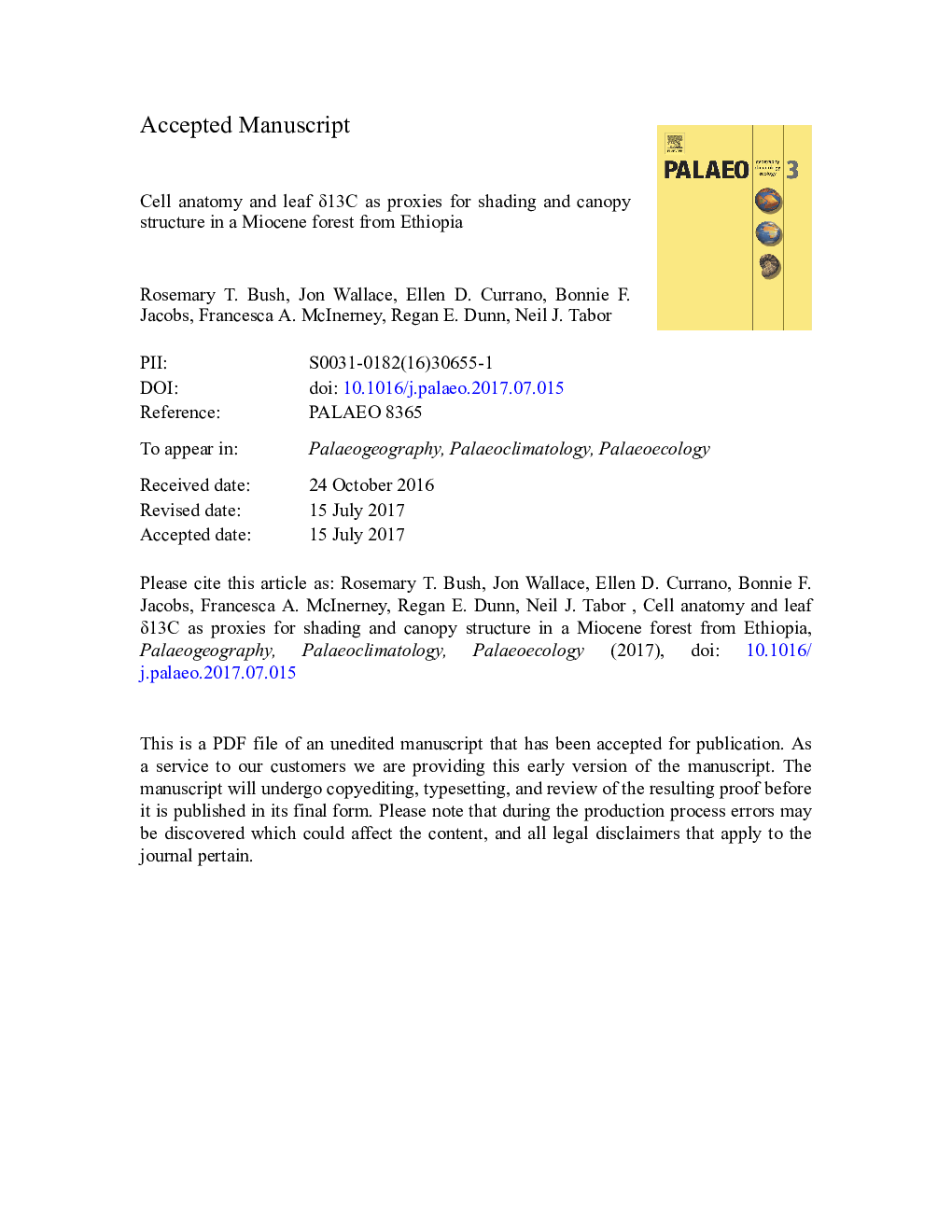| Article ID | Journal | Published Year | Pages | File Type |
|---|---|---|---|---|
| 8868694 | Palaeogeography, Palaeoclimatology, Palaeoecology | 2017 | 52 Pages |
Abstract
Plant fossils are most commonly preserved as isolated organs, making it difficult to determine plant life habit or ecosystem structure from fossils. In particular, paleoecologists have struggled to reconstruct forest canopy structure, a character that fundamentally influences hydrology, nutrient cycling, and plant and animal life. Analyses utilizing cellular morphology and leaf carbon isotope composition have been proposed to reconstruct light regime, itself a proxy for canopy structure, and we apply these proxies to exquisitely preserved leaf fossils from the early Miocene Mush Valley site in central Ethiopia. Epidermal cell wall undulation (undulation index, UI) and carbon isotope values (δ13C) were measured for 21 fossil leaves of a legume morphospecies, “Legume 1”. Five leaves of a second legume morphospecies were also analyzed using the same procedures. Carbon isotope ratios and total organic carbon content were measured for 85 additional fossil leaves belonging to at least nine morphospecies. A large range of both leaf δ13C and UI values were obtained for Legume 1, indicating that different leaves were exposed to different amounts of light, as would be expected in a closed-canopy forest. However, Legume 1 leaf UI values do not correlate with leaf δ13C values, implying that one or both of these variables is driven by factors other than light exposure. Additional modern calibrations are needed to determine the key environmental variables for each measure, as well as the influence of forest openings on preserved signatures.
Related Topics
Physical Sciences and Engineering
Earth and Planetary Sciences
Earth-Surface Processes
Authors
Rosemary T. Bush, Jon Wallace, Ellen D. Currano, Bonnie F. Jacobs, Francesca A. McInerney, Regan E. Dunn, Neil J. Tabor,
